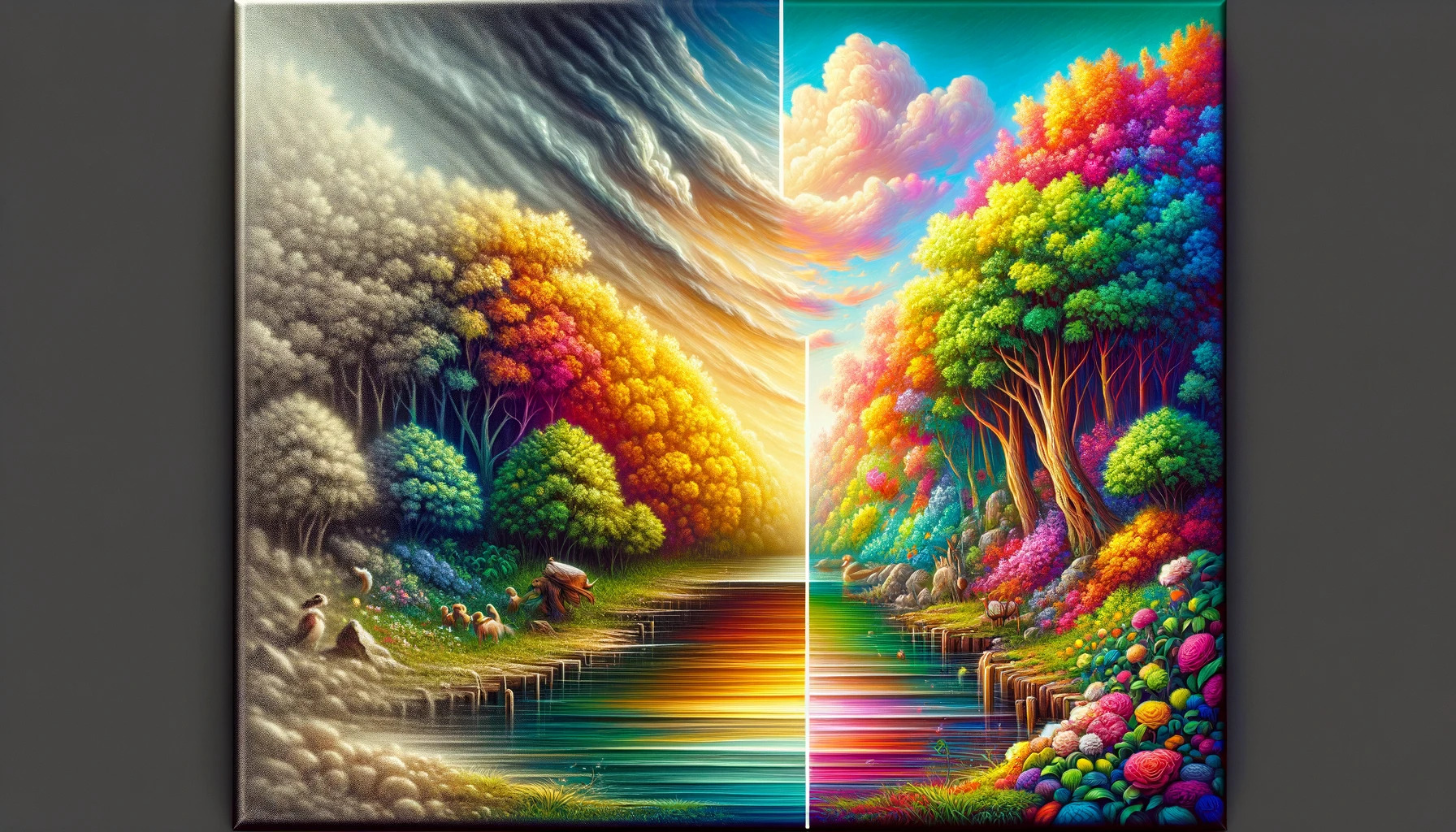Mastering Color Correction in Image Upscaling
By Jerry
Published March 6, 2024
 Mastering Color Correction in Image Upscaling
Mastering Color Correction in Image Upscaling
In the realm of digital imagery, the quest for perfection is unending. Photographers, graphic designers, and enthusiasts alike strive for that crisp, clear, and vibrant output that captures the essence of their vision. One critical step in achieving this is through image upscaling, a process that not only embiggens but also aims to enhance photo quality by upscale image techniques. But how do you maintain, or even enhance, the colors during this process? This article delves deep into mastering color correction in image upscaling, ensuring every pixel not only contributes to a larger picture but also does so with the right hue, saturation, and brightness.
Understanding the Basics of Image Upscaling
Before we dive into color correction, it's essential to grasp what it means to upscale an image. Upscaling is the process of increasing the resolution of an image, transforming it into a larger version without losing its clarity. This involves intricate algorithms that enhance photo quality by upscale image techniques, filling in the gaps that a bigger canvas brings with new pixels. The goal is to make sure that as we expand an image, we retain or even improve its original quality, including sharpness, detail, and, crucially, color accuracy.
The Challenges of Color Correction in Upscaling
The main challenge in upscaling images lies in retaining the fidelity of the original colors while adjusting to the newly added pixels. This can include:
- Ensuring that hues remain true to the source material.
- Keeping the balance between brightness and contrast.
- Preserving or enhancing saturation without overdoing it.
It's a delicate balancing act that requires a keen eye and a deep understanding of both the technical and artistic aspects of color correction.
Step-by-Step Guide to Color Correction in Image Upscaling
1. Assess the Original Image Quality
Begin by evaluating the color balance, saturation, and brightness of the original image. This initial assessment will guide your color correction process, ensuring that enhancements complement the image's natural aesthetics.
2. Color Balance Adjustment
Adjusting the color balance is crucial in maintaining the original feel of the image while correcting any color casts that might not be desirable in an upscaled version.
3. Enhance Saturation Carefully
Saturation boosts the intensity of colors in your image. A subtle enhancement can make colors pop, but it's essential to avoid oversaturation, which can lead to an unnatural look.
4. Brightness and Contrast Tweaking
Adjusting contrast in upscaling is vital for maintaining depth and dimension. Contrast adjustments help define edges and details, while brightness modifications can bring out hidden details in shadows or highlights, contributing to a more dynamic range.
5. Blurry Image Detail Restoration
Upscaling often brings to light the imperfections in an image, including blurriness. Restoring these blurry details involves sharpening techniques that enhance texture and clarity without introducing noise or artificiality.
6. Final Color Corrections
After addressing the technical aspects, the final step involves revisiting the overall color presentation. This might include tweaking specific color channels, adjusting midtones, highlights, and shadows to ensure the upscaling process has preserved the image's vibrancy and life.
7. Upscale Images in Batch for Efficiency
For professionals working with multiple images, the ability to upscale images in batch is a game-changer. This approach allows for the application of uniform color correction settings across a series of images, ensuring consistency and saving precious time.
Advanced Techniques and Tools
Utilizing AI and Machine Learning
The advent of AI and machine learning has revolutionized the way we upscale images. These technologies can predict and fill in missing details with astonishing accuracy, including nuanced color corrections that might be too subtle for the human eye.
Software Solutions
There are numerous software solutions available for color correction in image upscaling. Choosing the right one depends on your specific needs, budget, and skill level. Look for software that offers a wide range of color correction tools, supports batch processing, and preferably, incorporates AI technologies for the best results.
Conclusion
Mastering color correction in image upscaling is both an art and a science. It requires a deep understanding of how colors interact within an image and how they can be manipulated to achieve the desired effect. By following the steps outlined above and utilizing the right tools, you can ensure that your upscaled images retain their original beauty while meeting your quality standards. Whether you're a professional photographer, a graphic designer, or just someone passionate about digital imagery, mastering this skill set will elevate your work and allow you to achieve results that truly stand out.